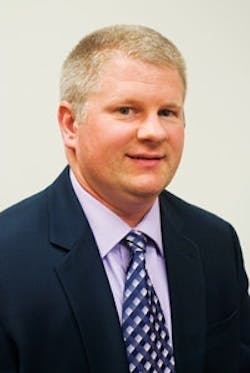About the author: Barney Blackburn, P.E., CPSEC, CPSWQ, is storm water engineer for AECOM. Blackburn can be reached at [email protected].
Coal combustion residual (CCR) materials from coal-fired steam electric generating stations are placed in ponds and landfills for disposal and containment. The John E. Amos Landfill, an industrial landfill operated by American Electric Power in West Virginia, is regulated by the West Virginia Department of Environmental Protection and is the site of CCR materials disposal from the adjacent coal-fired steam electricity plant. Clearing and grubbing, grading, subgrade construction, and clay and synthetic liner installation are completed prior to disposal operations. A typical landfill cell takes two to three years to construct, and individual cell construction requires several hundred thousand cubic yards of subgrade earthwork, as well as 5 to 40 acres of liner installation.
Engineering Study
The North Valley is more than 120 acres of watershed with steep, rugged topography. Soils composed of high clay content and rock heavy-laden with hematite (iron) create challenges for construction while maintaining storm water quality. The receiving stream, Lick Run, located in the lower Kanawha River basin, has total maximum daily load limits for iron of 1.0 mg/L for non-mining sources, and point sources in this portion of the river basin are limited to 100 mg/L of total suspended solids (TSS) for iron. A strong correlation exists between TSS and iron levels in effluent.
Prior to construction in the North Valley area of the landfill, a feasibility study evaluated storm water controls and construction practices to meet permit benchmarks. The study explored four options: retain the present design of two sediment ponds, incorporate flocculants and/or active treatment into the design, modify the future pond configuration and expand a wetland media filter, or modify future pond location and size for sequenced construction of remaining landfill cells.
The first two options were selected with enhancements to design a larger-capacity North Valley sediment pond and incorporate flocculants through an active treatment system (ATS).
Engineered walls were designed and constructed in the North Valley to create the necessary facility footprint while reducing potential erosion and sedimentation. The team evaluated several types of walls and construction methods, ultimately leading to the selection of two soil-nail walls: the south wall (12,000 sq ft, 35 ft tall) and the north wall (60,000 sq ft, 76 ft tall).
Active Treatment System
An ATS was chosen for chemical treatment of chitosan for iron, TSS and turbidity reduction in the storm water discharge. The ATS consisted of two sediment ponds for storm water collection, a weir and three frac tanks for settling of solids, a trailer where chemicals are incorporated and instrumentation is located, and four sand filter pods. Storm water from the cell development and soil nail wall construction is collected in sediment ponds and then pumped into frac tanks. The water is pumped from the tanks through instrumentation in the trailer where turbidity and pH are measured. Chemicals for flocculant introduction and pH adjustments are incorporated into the effluent inside the ATS trailer. The permit pH benchmark range of 5.5 to 8.5 is achieved by sodium bicarbonate and citric acid injection during the treatment process to increase or decrease pH.
From the trailer, the storm water is pumped through sand filter pods and recycled through the frac tanks and trailer instrumentation until turbidity and pH readings are within permit benchmarks. More than 27.8 million gal of storm water from the North Valley construction were treated to meet permitted benchmarks.
The landfill construction at the Amos Landfill was a challenging yet rewarding project in protecting and preserving water quality. Coal-fired steam electric generating stations can utilize the environmental methods applied at the Amos Landfill for storm water management during future heavy civil projects. Environmental excellence and compliance goals were achieved through comprehensive planning, effective implementation and diligent maintenance of erosion, sediment and turbidity control devices.


